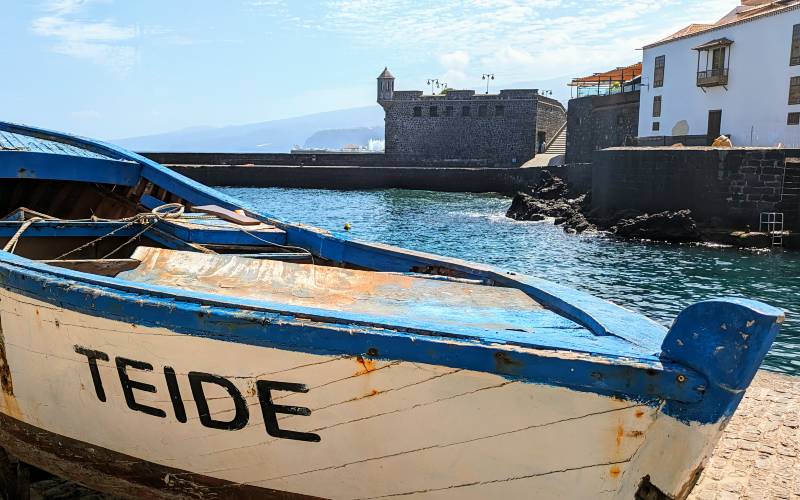On September 30, 2023, at 1:19 p.m., a large blue icebreaker named Polarstern entered Bremerhaven, Germany. On board: More than fifty scientists, including biologists, geologists and climate scientists. They were returning from a research trip to the Arctic, where they examined the state of sea ice, among other things. During the voyage, the arc broke through the polar ice covering the top of the Earth. How long will it take for Arctic ice to completely disappear?
Since satellite observations of Arctic sea ice began in 1979, the amount of sea ice has declined by about 13 percent each decade due to climate change. This has consequences not only for the habitat of polar bears, ringed seals and walruses. The melting of the ocean cover could also have serious consequences for global climate change.
Sea ice forms when seawater freezes at a temperature of -1.8°C. Part of the ice is annual and part is perennial. Year-long sea ice is thinner – between 60 and 200 centimeters – and is only found in the winter. Multiyear sea ice is thicker – up to 6 meters – and is present year-round.
The Polarstern ship has been sailing from Germany to the North Pole for years. Interestingly, in the 1990s the crew still had to run the engines at full speed, but in recent years less and less engine power has been needed. Due to climate change, the surface area and volume of sea ice are becoming increasingly smaller. Warmer temperatures through late fall and early spring mean that the cold winter season in which sea ice can form is shorter.
The worst ten years
To illustrate: In December 2022, in Nordaustlandt, Norway, Spitsbergen – which as of November is usually surrounded by sea ice – Measured temperatures 0 degrees Celsius, so that sea water does not freeze. Shorter winters also mean that sea ice grows less, which means that in summer multi-year sea ice is increasingly exposed to warmer ocean waters that cause a lot of melting. In recent years, thick, multi-year ice has melted in this way in many places and been replaced by a thinner, seasonally variable ice sheet.
On September 16, 2012, the Arctic sea ice area reached 3.41 million square kilometers. This number has never been this low. By comparison, in 1979, the minimum sea ice area was 6.46 million km2; A decrease of 48 percent. The record has not been broken since. KNMI wrote already in 2020 It’s only a matter of time.
On September 19, sea ice reached its minimum for the year: 4.23 million square kilometers, the fifth worst year since records began. Of the past 10 years, six were among the 10 worst years for Arctic sea ice cover. It is therefore not surprising that the sea ice surface in the past 10 years has been much worse than the 1981-2010 average.
Sea ice development in September
In addition to the surface, sea ice concentration is also necessary for eventual melting. A lower concentration means that the ocean is not covered by a dense layer of ice, but rather the ice covers the ocean like an incomplete mosaic. Not surprisingly, so is the concentration of sea ice It has declined significantly since measurements began in 1979. There are no exact numbers to quantify this decrease, but it is clearly visible on the National Snow and Ice Data Center (NSIDC) maps.
The first ice-free summer in the Arctic could occur in 2100, according to calculations by the Intergovernmental Panel on Climate Change (IPCC) in 2007 using mathematical models. The latest IPCC report already points to the summer of 2050. It was published last June South Korean study In the scientific journal Nature Communications Which calls for 2030 as the first ice-free summer. So the question is not whether Arctic sea ice will disappear, but when.
Feedback mechanisms
Cause of sea ice loss: climate change. The result of sea ice loss: more climate change.
“This sounds a bit simple, but ultimately it is the case,” says Roderick van de Waal, a professor of sea level rise at Utrecht University, who has worked in the Arctic for decades. “This relates to so-called feedback mechanisms that have a significant impact on climate in the Arctic.”
Van de Waal states that the decrease in albedo is the main process. Albedo is the reflectivity of the Earth’s surface. White surfaces – such as snow-covered sea ice – reflect a relatively large amount of sunlight, preventing temperatures from rising. Open sea and sea ice without snow reflect sunlight much less and thus contribute to local and global warming.
Sea ice is much lower in recent years
According to Van de Waal, higher temperatures cause more snow to melt on the ice, leading to less reflectivity and thus warming the area. “In addition, more and more of the sea ice itself is melting, leading to more open water,” Van de Waal explains. “This causes the water to heat up, which in turn causes the sea ice to melt faster, creating more open water.” For example, because of more warming, less sea ice forms, which in turn leads to more warming, causing sea ice areas to continue to decrease. “And every year…”
This so-called albedo feedback makes the Arctic the fastest warming place on Earth. Global warming in 2022 will reach about 1.15 degrees compared to the average temperature between 1850 and 1900. On the other hand, the average temperature in some places in the Arctic – such as Edegoya in Spitsbergen – has already risen by six degrees Celsius compared to 1960. .
The Arctic is the fastest warming place on Earth
Although the downward trend of Arctic sea ice is clear, the variations in sea ice cover from year to year are still relatively large. This is due to what is called climate variability. Even if the climate does not change, there are still changes in the weather from year to year. Some years are warmer, drier, or have more precipitation.
Hot and cold years
The reason for the large variation in sea ice cover: thinning of sea ice. After all, thin sea ice is melting faster but it’s also growing faster, depending on whether it’s a cold or warm year. If the Arctic continues to warm in the future and sea ice disappears, this variability will decrease again. These variations in sea ice cover in turn affect changes in weather. As the Arctic continues to warm, more open water reduces temperature changes. On the other hand, precipitation increases because more water can evaporate, in the absence of sea ice to act as a cover for the ocean.
“To complicate matters, changes in precipitation and temperature also play a role in the local formation of Arctic sea ice, and all the processes are interconnected,” says Roderick van de Waal. “This additional feedback is very difficult to model because we do not yet adequately understand many of these differences.” This makes predicting the exact consequences of disappearing sea ice for the rest of the world difficult.
However, a number of estimates can be made, says van de Waal: “If all sea ice disappeared, the temperature at high latitudes would rise on average by about two degrees, on top of the warming caused by greenhouse gas emissions.” Reduced sea ice leads to greater temperature differences between low and high latitudes, or the temperature gradient becomes larger between the tropics and the poles. “This changes the location of low and high pressure areas around the world, which in turn has consequences for the occurrence of extreme weather events such as long-term drought, hurricanes or heavy rainfall.” But here too, according to Van de Waal, the uncertainty about the exact consequences is still very great.
In any case, one thing is certain: changing sea ice cover is causing climate change not only in the Arctic, but also far beyond it.
Charts and animation Tim Tensen
design Sunny van Grinsven

“Total coffee specialist. Hardcore reader. Incurable music scholar. Web guru. Freelance troublemaker. Problem solver. Travel trailblazer.”






/s3/static.nrc.nl/bvhw/files/2023/10/noordpoolgifhp.gif)
More Stories
We would probably live longer if we ate less
The poorer the neighborhood, the fewer the number of vaccinations
Outgoing museum director Andreas Blom remains loyal to Groningen and is wary of floundering. “You must give space to my successor.”